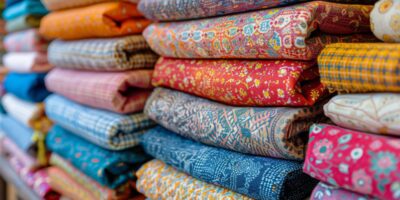
In the fashion industry, the concept of “eco-chic” — where style meets sustainability — is gaining significant traction. The Middle East, a region historically known for its opulent fashion sense, is now seeing a burgeoning trend towards green fashion. Startups across the region are leading this eco-conscious shift, driving the fashion industry towards more sustainable practices. This article explores the rise of green fashion startups in the Middle East, examining the factors driving this trend, the innovative practices being adopted, and the challenges faced by these ventures.
The Emergence of Eco-Chic in the Middle East
Fashion has long been an integral part of Middle Eastern culture, with the region known for its rich textiles and unique designs. However, the global shift towards sustainability is reshaping the industry. Young entrepreneurs and designers are recognizing the environmental impact of fashion and are motivated to make a change. This has led to the rise of green fashion startups that are committed to eco-friendly practices, from sourcing to production and distribution.
Driving Factors Behind Sustainable Fashion
Consumer Awareness and Demand: Increased awareness about global environmental issues has led to growing consumer demand for sustainable products. More consumers in the Middle East are looking for ethical fashion choices that do not compromise on style. This shift in consumer preferences is a primary driver for the emergence of eco-friendly fashion startups.
Governmental Support and Initiatives: Several Middle Eastern countries have introduced initiatives to promote sustainability as part of their economic diversification strategies. For instance, the United Arab Emirates and Saudi Arabia have implemented significant policies supporting sustainable development, which extend to encouraging eco-friendly businesses, including fashion startups.
Global Influence and Local Adaptation: As global fashion brands increasingly integrate sustainability into their operations, local startups are inspired to follow suit. These young companies are not just copying global trends but are adapting them to fit local tastes and cultural preferences.
Innovations in Green Fashion Startups
Green fashion startups in the Middle East are incorporating sustainability into every facet of their business model. Here are some of the innovative practices being adopted:
Sustainable Materials: Many of these startups are turning to eco-friendly materials such as organic cotton, bamboo, recycled fabrics, and alternative materials like Piñatex, made from pineapple leaves. These materials are not only sustainable but also reduce the ecological footprint of the fashion items produced.
Ethical Manufacturing Processes: Transparency and ethical practices in the manufacturing process are hallmarks of green fashion startups. These companies often ensure fair wages and good working conditions for their workers, aligning with the broader goals of social sustainability.
Waste Reduction Techniques: Zero-waste design is becoming a popular practice among eco-fashion startups. Designers are using cutting techniques that minimize fabric waste, and any leftovers are either recycled or repurposed to create new products.
Local Production: To reduce carbon emissions associated with transportation, many startups are focusing on local or regional production facilities. This not only helps reduce the carbon footprint but also supports local economies.
Challenges Faced by Green Fashion Startups
Despite the enthusiasm, green fashion startups face several challenges:
High Costs: Sustainable materials and ethical manufacturing processes often come at a higher cost compared to conventional methods. This can make eco-friendly products more expensive for consumers, potentially limiting their market reach.
Market Education: There is still a significant need to educate consumers about the benefits of sustainable fashion. Many consumers in the Middle East are accustomed to fast fashion, which often prioritizes convenience and low costs over sustainability.
Scaling Up: For many startups, scaling up their operations while maintaining sustainable practices is a major challenge. Growth can lead to compromises in environmental standards if not managed carefully.
Looking Ahead
The future looks promising for green fashion startups in the Middle East. With increasing global and local attention on the environmental impacts of industry, consumer preferences are likely to continue shifting towards sustainability. As more entrepreneurs enter the green fashion space, competition will drive innovation, potentially lowering costs and making sustainable fashion more accessible.
Conclusion
The rise of green fashion startups in the Middle East is a testament to the region’s ability to adapt and innovate in the face of global challenges. By embracing eco-chic, these startups are not just making a statement about style but are also contributing to a more sustainable future. As they continue to grow and influence the broader fashion industry, they pave the way for a new era of fashion that honors both heritage and the environment.














